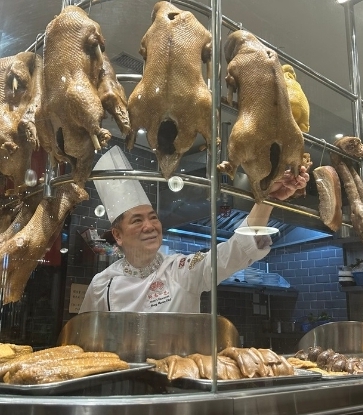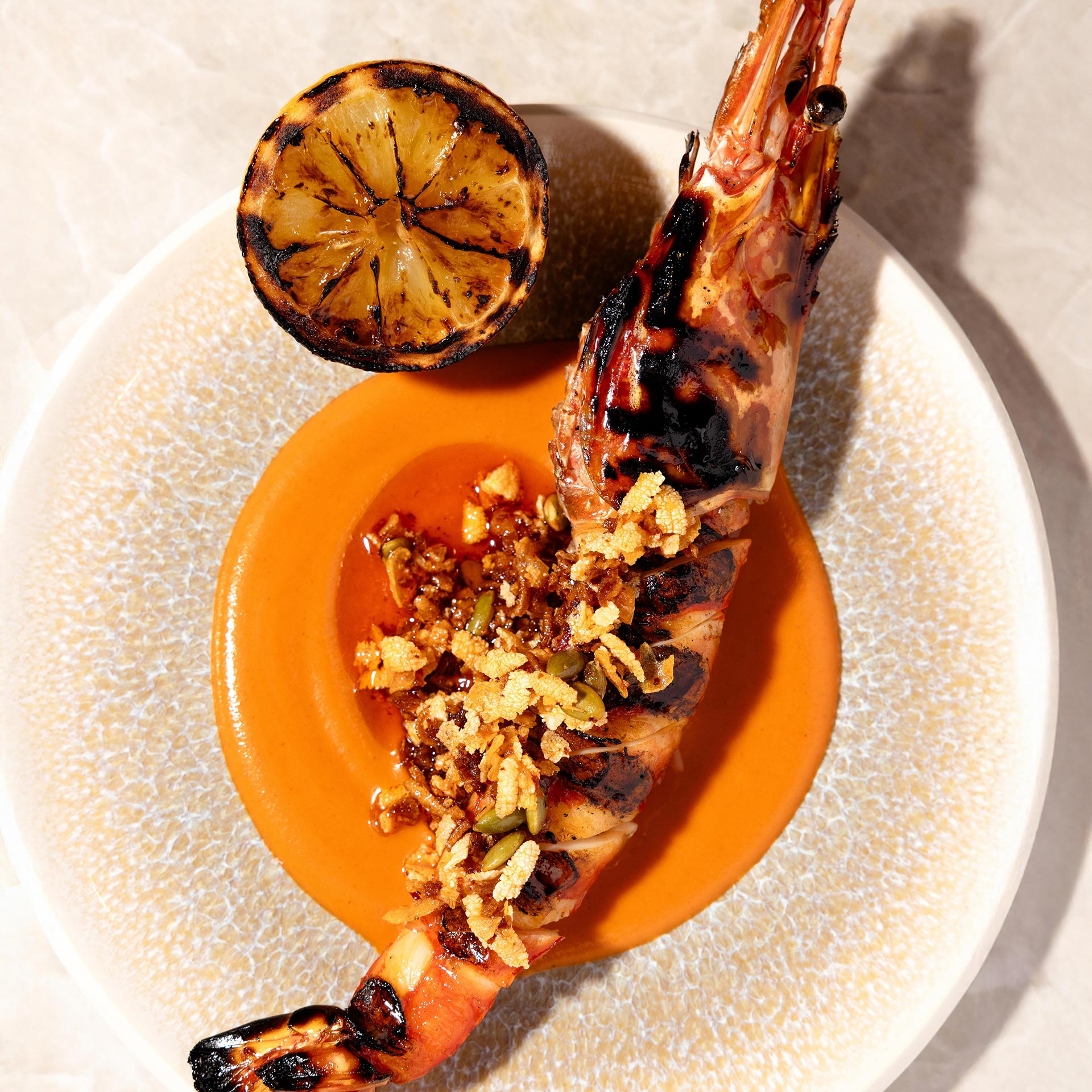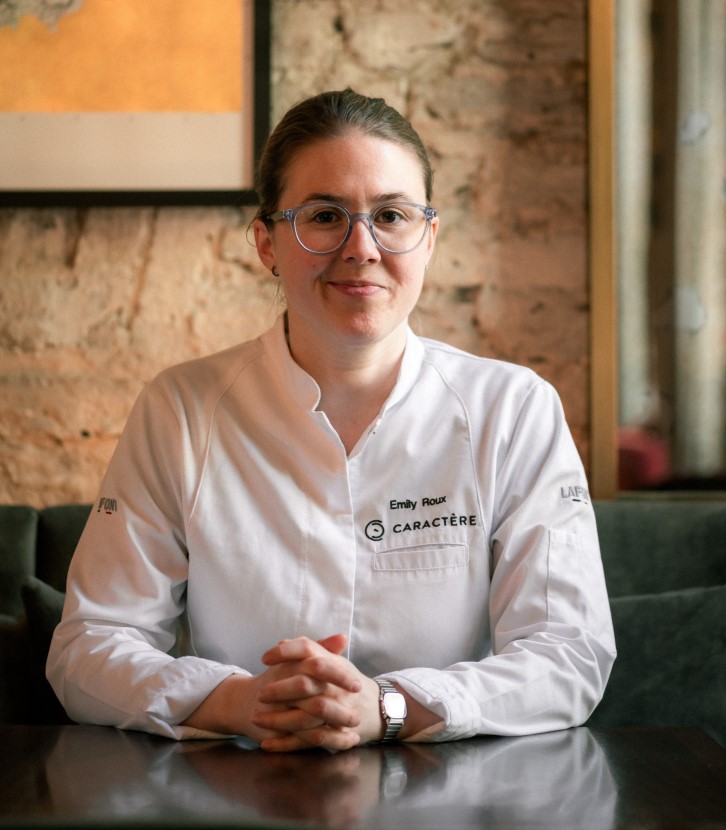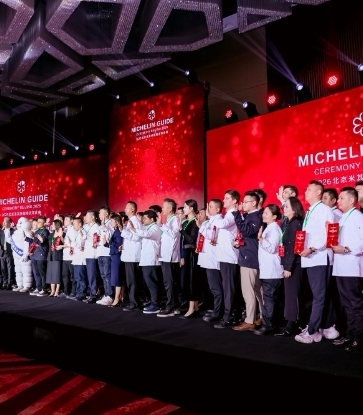Having opened in 2014, Neighborhood is tucked away in an alley in the heart of Central, Hong Kong. You will find its low-key entrance by walking down a hidden alley that opens into a small park. There, you’ll meet chef-owner David Lai, jocular with smiling eyes and a breezy attitude, and always clad in his signature white t-shirt, no matter the season or occasion.

Though Lai studied art in college, he has spent more time in the kitchen than in the classroom studio. Upon graduation, he started working as a chef in the San Francisco Bay Area before training at many a MICHELIN-starred restaurant around the world, including the three-MICHELIN-starred Alain Ducasse at The Dorchester in London and famed three-MICHELIN-starred restaurant Le Louis XV - Alain Ducasse à l'Hôtel de Paris in Monaco. He arrived in Hong Kong more than a decade ago and opened a succession of restaurants— Bistronomique and the now-defunct Lot Ten, offering French and Italian cuisine.
When he finally opened Neighborhood in 2014, Lai deliberately did not define its cuisine because he wanted his customers to come without expectations. Eschewing tradition, he chose to cook based on ingredients and inspiration. Because of the kitchen’s tiny size and space constraints, most dishes on Neighborhood’s menu are large plates meant for sharing. Eventually, this became a unique trait of the restaurant’s casual “bistronomy” style, drawing crowds and celebrity gourmands.

Neighborhood is best known for its seafood dishes. Lai himself is a fan of Hong Kong’s local seafood, and his eyes so often light up as he talks about fish that the press have sometimes described him as being a cat. The chef once opened a seafood-centric restaurant called Fish School, and even now can still often be found at Ap Lei Chau Market, personally selecting the catch for his restaurant.
"Most of the seafood sold in local markets are farmed, imported, or caught outside Hong Kong waters. With a population of more than 7 million, Hong Kong's thirst for seafood far exceeds what a small island can provide, so there are very few truly locally caught seafood. Fortunately, there are still some markets where you can buy locally caught seafood, such as the markets in Tai Po, Tsuen Wan, Mong Kok, Shau Kei Wan, and Ap Lei Chau. I often go there to see what fresh seafood is available that day," he shares.
He also spends the time to develop relationships with suppliers in the markets in order to secure the best produce. While the chef notes that in recent years, people have become more and more concerned about the sustainability of seafood, he believes the solution is in consuming less but better, paying attention to quality, and cutting down on the quantity of low-quality seafood purchased. "In Hong Kong, we are lucky that we are able to find live fish in the market, which is usually line-caught or procured in a way that causes less damage to the environment."
He studies each fish in detail to select the most delicious ones based on certain telltale signs. For example, the blue and white lines under the eyes of star snappers fade away the longer the fish is dead. When he finally selects one with bright eyes and vivid markings, the meat yields rich flavour and tender belly fat.

As part of his fin-to-tail philosophy, every part of a large fish — Indonesian giant grouper, for example — from its lips to its fins, finds its way into Lai’s dishes through creative cookery. One of the most memorable dishes on the menu is local blue lobster cooked with chicken liver and served with a reduction of butter and white wine; the rich fattiness of the liver bringing out the fresh sweetness of the lobster. Come winter, when herring is abundant in Hong Kong, the chef uses a method of cooking pork from the north of France, first smoking the fish, and then pairing it with European-style sauerkraut and fatty pork. From the other side of the world, he cooks the herring Japanese donabe-style with rice, resulting in a surprisingly delicious dish.
It’s hard to define what the signature dishes are at Neighborhood, because the single-page menu changes so frequently that returning diners don’t usually get the exact same dish. Most don’t even bother looking at the menu and instead simply ask the wait staff: “What has the chef bought at the market today?”
Here, we introduce five seafood dishes from Neighborhood, which often appear on the menu in varied forms.

Seafood Soup
Every seaside culture around the world has its own fisherman's broth, often consisting of fish leftover from the day’s catch at the market. Most well-known perhaps, is the bouillabaisse from Marseilles in France, flavoured with saffron, garlic, and fennel. Neighborhood offers its own take on bouillabaisse: "We use a variety of local rockfish and shellfish to substitute species more common in the Mediterranean such as red or king snappers, eel, scorpion fish, mantis shrimp, and crab. Adding a variety of fish and seafood to the soup base adds depths of flavour,” explains Lai.

Carpaccio and Sashimi
"In Hong Kong, we can occasionally find snapper and flounder weighing more than three kilograms. These two types of fish are particularly suited for serving as sashimi and savoured raw for their texture and flavour." Lai explains that the fish are purchased live, and then prepared by stunning them, draining their blood, and chilling them to preserve peak freshness and its delicate flavours. The thinly sliced fish is usually simply served with seasonal fruit, kombu, and premium extra virgin olive oil to let it shine.
Smoked Fish
A preservation tradition in many cultures, salty smoked fish makes for an excellent appetiser. Lai has put many varieties of fish through the smoker, including eel, mackerel, and croaker. His past experiments push the boundaries of smoked fish, including a smoked local Pacific saury, which he served with a bitter fish offal sauce, as well as smoked local mackerel.

Braised Fish Head
Lai enjoys working with fish heads because they contain all kinds of interesting parts with a rich variety of textures: collagen-rich skin, smooth cheek morsels, and meaty flesh hidden under bones. Furthermore, fish heads make for memorable plating. “We usually simmer the fish head in fish stock, or stock made from meat or game, with wine to give the fish head a more complex and fuller flavour. After the fish head is cooked, we debone the fish and pour the rich soup over the meat to serve," he says.
Grilled Cuttlefish
One of the seasons that Lai looks forward most to is cuttlefish season in the late spring and early summer. In Hong Kong, small cuttlefish can easily be caught near the shore and brought alive and wriggling to the market for sale. Freshness is key to great tasting cuttlefish that tends to lose much of its sweet flavour if out of the water for even just a day. Lai grills the cuttlefish over charcoal or in a very hot pan over high heat to achieve caramelisation and bring out its natural sweet and smoky flavours, with nothing but some simple seasoning; careful not to overcook the cuttlefish lest its meat become too tough.
Original article by Gloria Chung, translated by Rachel Tan.






















